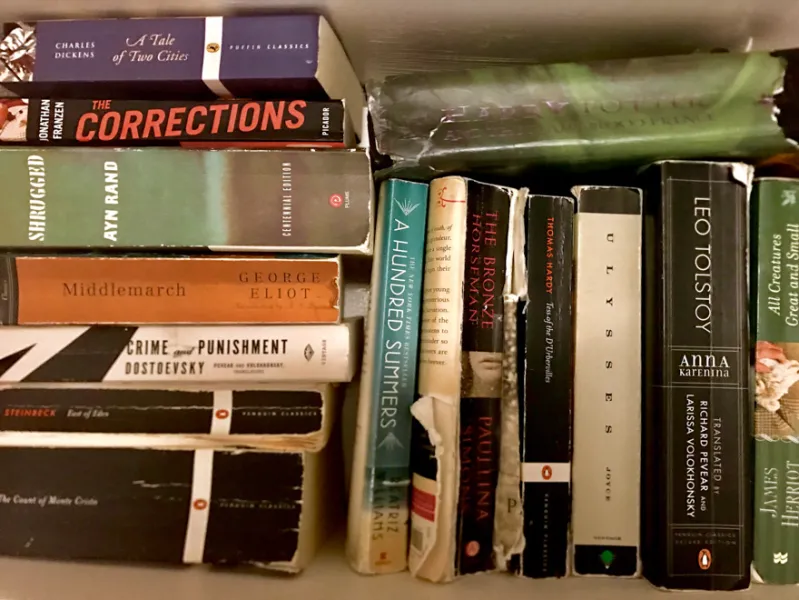The Reading and Dyslexia Research Program at Stanford recently developed a new reading assessment platform that allows schools to assess their entire student body’s reading ability and identify struggling readers in the time it would typically take to evaluate one student — and at a much lower cost.
With the Rapid Online Assessment of Reading (ROAR), students can assess the same skills in five to 10 minutes. Previously, standardized reading assessments could take hours for a single student to complete.
The Brain Development and Education Lab needed a new way to administer reading assessments following the suspension of in-person research during the pandemic. They landed on the lexical decision task, which measures lexical access based on how quickly subjects can classify real words. This eventually became the Single Word Recognition (ROAR-SWR) test, which presents a series of real words and pseudowords to its subjects, who are then asked to determine which words are real.
Validation studies showed that the assessment platform was comparable to acclaimed assessments like the Woodcock-Johnson Word Identification test, one of the most widely used standardized assessments for evaluating student reading abilities.
According to ROAR Research Project Manager Clementine Chou, ROAR tests are slightly gamified so that students can complete them without a proctor. This makes it easier for educators, clinicians and researchers to collect and evaluate scores. ROAR can also launch on any web browser, making it highly accessible and affordable for school districts, Chou said.
Chou said ROAR was an effective way to scale up data collection and gain access to a larger, more diverse sample. ROAR is different from the lab’s pre-pandemic work, which relied on standardized assessments of reading ability that were administered “one-on-one, in person, when you’re sitting face-to-face with a kid and you’re having them read out loud,” Chou said.
The ROAR team is working with nine Bay Area school districts as part of the Stanford-Sequoia K-12 Research Collaborative to bring the assessment into classrooms, determine its real-world efficacy and use feedback to further optimize the test.
Ching-Pei Hu, who is the Assistant Superintendent of Educational Services at the Belmont-Redwood Shores School District, one of the participating districts, said the partnership was mutually beneficial.
“I am hopeful that as we refine the product and user experience, this can be something that provides an extra piece of data for us as schools,” Hu said.
The ROAR team is also working with school districts outside of this partnership. Anya Ma, a first-year Ph.D. student working in the Brain Development and Education lab, said they are “working hard to make ROAR visible and accessible to a wide range of schools and communities across the country in terms of race, socioeconomic status, English language learner status and learning differences.”
According to Chou, the assessment is viable for students through high school. The ROAR team tested its program with teenagers and found that some high school students who teachers assumed were experiencing difficulties with reading comprehension actually lacked foundational reading skills. Students could then be paired with teachers to address foundational knowledge gaps and ultimately improve more complex skills like reading comprehension, Chou said.
“Usually, assessing fundamental reading skills happens only in the early grades, like first grade and second grade, but ROAR targets a wider grade range,” Ma said.
Researchers within the lab are working on two additional tests for ROAR — Phonological Awareness (ROAR-PA) and Sentence Reading Efficiency (ROAR-SRE) — that will assess sound matching and silent reading abilities. Ma said these tests will “help to build a more comprehensive and interpretable profile for each struggling reader,” enabling teachers to better understand their students’ needs and adjust their curricula accordingly.
The lab also recently began working with the University’s Developmental-Behavioral Pediatrics clinic to screen for learning differences in children entering the clinic. Heidi Feldman, the clinical director for ROAR, said this is currently in a pilot phase, with the test administered to 40 children. Initial data analysis suggests that the agreement between ROAR scores and Reading Test scores is “acceptable,” Feldman said.
According to Feldman, ROAR can improve early intervention, which is associated with greater improvement in reading compared to later intervention by identifying students falling behind in reading skills.
Chou said “the project has really exploded and grown so much in such a short amount of time.” They are partnered with 32 schools.
Ma said the explosive growth in data is enabling the ROAR team to collect a national sample that can “illuminate the importance of reading skills” for all grades and increase awareness to support students. “We’re really excited about the future,” she said.
A previous version of this article inaccurately stated the number of schools ROAR partnered with. The Daily regrets this error.
